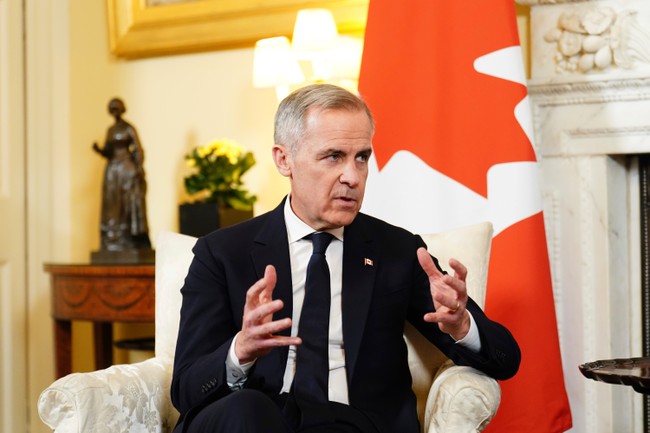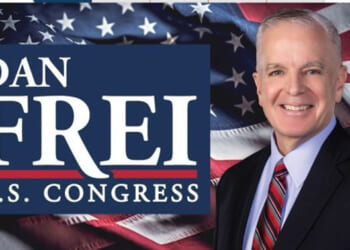
Historian Eric Foner of Columbia University, in an article titled “Lincoln’s Lesson,” deplored the fact that the Soviet Union allowed its constituent republics to secede without firing a shot, arguing — so far as I understand him — that secession could devolve into a kind of fractal or Matryoshka Doll of endlessly nested, repeating parts.
His brief seems to be that internal ethnic groups may lose their minority rights or be tempted to agitate for their own independence and thus find that they will suffer at the hands of the secessionary faction itself. Consequently, violent action undertaken by the original state to prevent secession is justified, regardless of the cost in blood and treasure.
When it comes to the prospect of the Western provinces of Canada, in particular Alberta, seceding from Confederation, Foner’s analysis is pure flannel. There is no likelihood of certain parts of the province engaging in incendiary guerrilla warfare against other parts of the province, as if the American Civil War were about to be re-enacted in cameo. There may be bouts of civil disobedience and social disruption, but the new nation’s constabulary and the new administration’s generous social programs would keep such disturbances to a minimum and probably phase them out altogether. Nor is Canada in a position to mobilize a military that has effectively ceased to exist.
Some commentators believe that separation may never come to pass, owing not only to fear of the unprecedented and lack of American-like initiative and courage, but because Mark Carney might experience a “Damascus road” conversion, rendering the entire scenario moot.
For example, Conrad Black opines that “There is some room for optimism. As an almost hallucinatory climate change fanatic, Carney was an apostle of the carbon tax and an enemy of pipelines, but the Liberal party polltakers induced the grace of mid-campaign conversion… The best hope for a successful Carney government is that its leader will continue to put expediency ahead of dogmatism.”
For a seasoned historian of weight, Black seems to have forgotten about the standard form of political chicanery, the issuing of promises or intentions to sway an electorate, before they are duly scrapped post-election. We need to remember, too, that this is the same Conrad Black who praised Justin Trudeau as “flexible in public finance… a very alluring personality, a quick intelligence and an apparently reasonable combination of principle and openness.” We accept Black’s assessment at our peril.
Similarly, Alberta Energy Advisor David Knight Legg believes that, following the May 6, 2025, meeting with President Trump, Carney may have been “mugged by reality. He has seen the books. He’s about to lose the auto industry [as well as] steel and aluminium. He needs money, and energy in Alberta and Saskatchewan is the only thing there is.”
After all, the West represents the greater proportion of Canada’s export GDP. So perhaps a rapprochement with Alberta Premier Danielle Smith, who has laid “the groundwork upon which the idea of independence may finally find its popular footing,” may be forthcoming if Carney is prepared to offer significant concessions. But as Nigel Hannaford warns, Carney is “asking a lot to believe that after decades of trying to put the oilpatch out of business, [he] has really had a Damascus Road experience and seriously means to expand it.”
It stands to reason that the losses and deficits to Canada’s manufacturing sector are precisely what a net-zero, Marxist imperator, climate-change zealot, anti-national globalist like Carney, according to his own published convictions, would most ardently desire, creating a 21st-century neo-feudal society predicated on a massive political divide between the new aristocracy and a vast eluvium of downtrodden serfs.
As Joel Kotkin writes in The Coming of Neo-Feudalism: A Warning to the Global Middle Class, the new feudalism will be “wrapped in a creed of globalism and environmental piety” and will feature “an orthodoxy that puts a premium on stasis and accepts social hierarchy as the natural order of things.” It will be a time of unprecedented levels of social control through mass surveillance, electronic monitoring, biochemical devices, and a kind of distributed and barely noticeable panopticon, or social credit score, in order to create a docile populace. The new ideal is to arrest “the spread of wealth and opportunity” that once benefited the bourgeoisie, tradespeople, and craft workers, and to effectively eliminate the middle class, property rights, and freedom of speech and mobility.
This is the program that Carney, a member in good standing of the powerful, manorial clerisy moving in elite circles, has in mind for those whom Kotkin in The New Class Conflict, an equally important book, refers to as “the Yeomanry.” In other words, us. We should never forget that Carney is not interested in prosperity for the nation, but, as specified in his tome Value(s) and his various talks and writings, his real agenda is the de-industrialization and impoverishment of the market economy.
This is why Western independence is absolutely essential and why its proponents should not demur or draw back out of separation anxiety, fear of civil violence, or the spectacle of Foner-like micro-sovereignties claiming title to their own bijou parcels of land. Fort McMurray is not about to separate from Medicine Hat, and Red Deer is not about to attack Edmonton.
True, Native tribes continue to insist that much of the land is theirs, remaining “unceded and unsurrendered.” British Columbia MLA Dallas Brodie points out that a province cannot accommodate some 200 sovereignties within its borders and argues that the unfounded sovereignty claims of indigenous peoples and the broader set of grievances promoted by the reconciliation industry can and must be repudiated. The question would eventually be fairly adjudicated.
Pragmatic Albertans need to understand what the federal government is planning for them and the dangerous future the status quo would entail. They need to realize that Carney proposes to expand the Court Challenges Program, whose mandate is to bankroll advocacy types and special interest groups to defend constitutional challenges and support the government’s covert agenda, thus circumventing the democratic process through the courts. The effect would be to delay, reduce, or outright impede the province’s energy and agricultural output and further depress its economy.
Further, the list of Carney’s cabinet members and secretaries of state is extremely Ontario-heavy (12 members), with strong additional representation from Quebec (9 members) and British Columbia (5 members). (British Columbia is not considered a “Western” province.) As expected, Alberta and Saskatchewan each have only a single MP in cabinet, the same as potato-producing Prince Edward Island with a population of 179,280. Carney’s cabinet is merely Trudeau 2.0. Of course, the ratio of cabinet appointees tracks the proportion of seats a party wins per province, but there is some room for maneuvering if the government so desires.
Though encouraged by the usual suspects to accede to the Liberal government’s ostensible good faith, prairie citizens should not outsource their critical thinking to the hired colonies of pontificating “experts” and media oracles concerned only in marginalizing Western voices and interests and plying the government line.
Rather, they need only consult Carney’s book to know who he is and what his real intentions are for the country he is ready to misgovern. It is a very bad book, stylistically clotted, utterly boring, self-infatuated, cognitively turgid, and far too long, and I wouldn’t wish it on anyone. Still, it is Carney’s introduction and confession. Since we need to recognize what it purports, we should not feel it beneath us to read it.
Editor’s Note: Do you enjoy PJ Media’s conservative reporting taking on the radical left and woke media? Support our work so that we can continue to bring you the truth. Join PJ Media VIP and use the promo code FIGHT to get 60% off your VIP membership!












